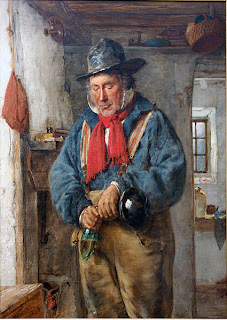
One of the good things about doing Fiction Friday is I get promote work of authors who I think do an exceptional job of creating stories rich in historical detail. The first author is one of those authors. DIANA COSBY first came on the scene with her debut book HIS CAPTIVE, to be followed by HIS WOMAN. And her third book of the MacGruder brothers will be on the bookstore shelf November 2, HIS CONQUEST. If you haven’t tried her books yet they are all set in Scotland in the first war of independence... the Scotland of Wallace and de Moray. There will also to be a fourth book HIS DESTINY in the series in the November of 2011.
 Another book out on November 2nd is ELIZABETH THORTON’s A BEWITCHING BRIDE, her final book. This is a tale of secrets, murder and a bit of paranormal talents as the hero and heroine challenge each other’s talents to solve the murder but not before they are caught in a compromising position. This is an historical set in Scotland of the late Victorian era. The late MS Thornton was no novice to Scottish romances, her other Scottish titles include: THE SCOT AND I, RUNAWAY MCBRIDE, DANGEROUS TO LOVE, and HIGHLAND FIRE. Ms Thornton a Scot from Aberdeen, Scotland passed away July 12, 2010 and she will be sorely missed as she had a unique voice and a grasp of what historical readers wanted.
Another book out on November 2nd is ELIZABETH THORTON’s A BEWITCHING BRIDE, her final book. This is a tale of secrets, murder and a bit of paranormal talents as the hero and heroine challenge each other’s talents to solve the murder but not before they are caught in a compromising position. This is an historical set in Scotland of the late Victorian era. The late MS Thornton was no novice to Scottish romances, her other Scottish titles include: THE SCOT AND I, RUNAWAY MCBRIDE, DANGEROUS TO LOVE, and HIGHLAND FIRE. Ms Thornton a Scot from Aberdeen, Scotland passed away July 12, 2010 and she will be sorely missed as she had a unique voice and a grasp of what historical readers wanted.

This next offering is from my To Be Read pile and is a from a debut author. The book though not romance in the true sens is a historical fiction offering and should appeal to the romance reader. THE EXILE OF SARA STEVENSON by DARCI HANNAH is the story of Sara Stevenson in 1814, the daughter of the lighthouse designer Robert Stevenson, who falls in love with a young sailor named Thomas Crichton, becomes pregnant but her parents send her to the far reaches to a lighthouse on Scotland’s far north where she meets William Campbell. When Thomas doesn't show at their arranged place, she decides that what is been done is done and tries to get on with her life until news of Thomas’s possibly whereabouts. The tale seems to take on a tone of mystery and love with an expected HEA if not a traditional romance.
And finally as promised I have a few more authors from THE MAMMOTH BOOK OF SCOTTISH ROMANCES:
SANDY BLAIR, a favorite of Scottish romance readers, is no stranger to these MAMMOTH BOOKS OF… series having a story in the MAMMOTH BOOK OF TIME TRAVEL ROMACES with her story...
Ms Blair’s other titles include a Christmas story and her “… in kilt” series. The only drawback to her stories, for me, is her heavy use of Scots dialect and can slow the pace of her books.
And two new comers to me:


HEATHER MCCOLLUM is a Wild Rose Press tauthor whose Dragonfly chronicles include: PROPHECY, MAGICK, and soon to be published MASQUARADE.
DEBBIE MAZZACU’s books include her debut LORD OF THE ISLES (April 2010) and WARRIOR OF THE ISLES (May 2011)
